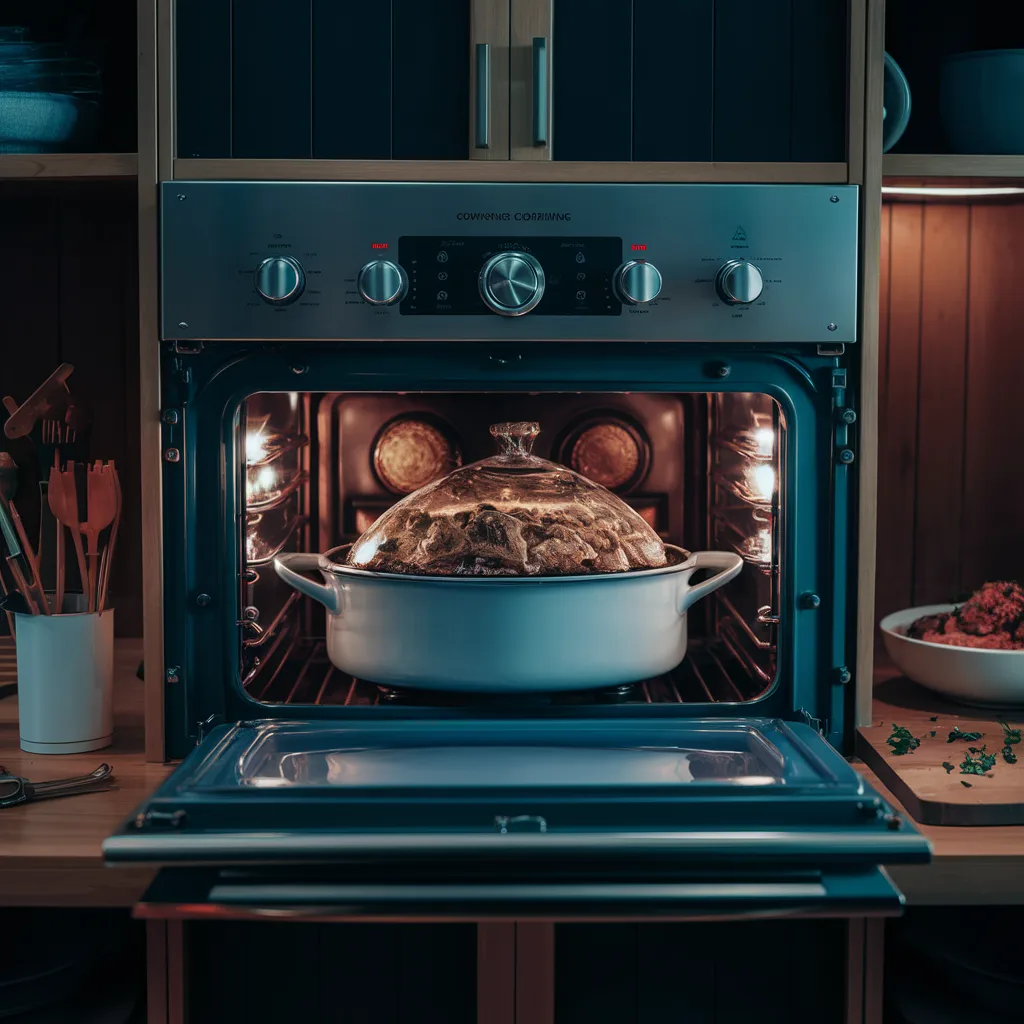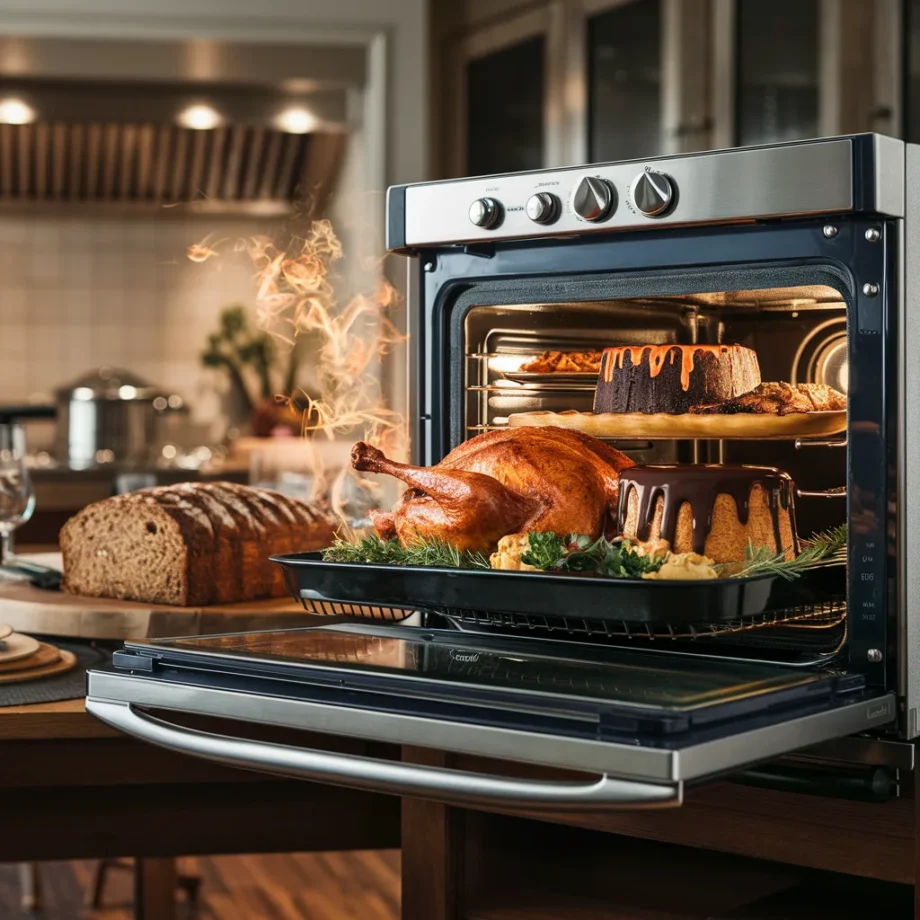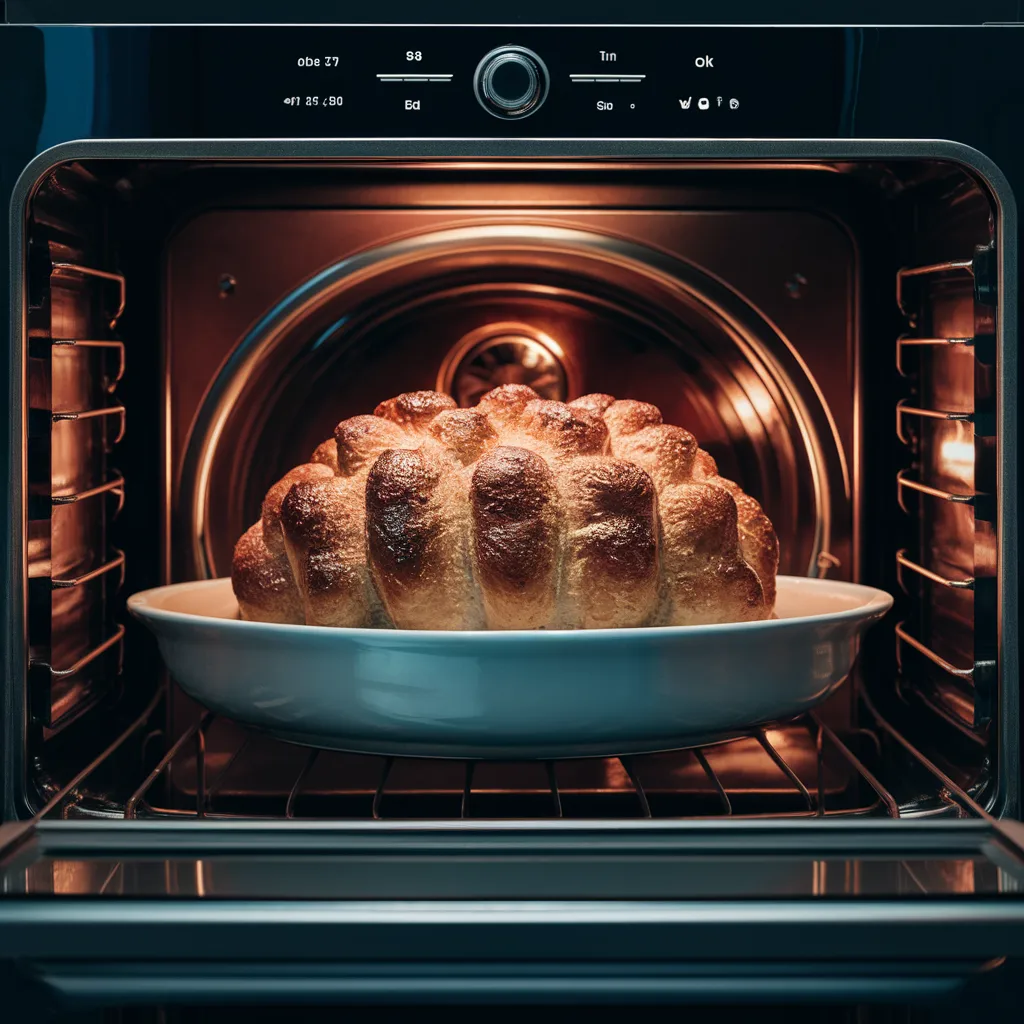This article explores the pros and cons of conventional ovens and discover various alternatives. Learn from expert insights whether upgrading your oven is worth it.
Susan has been using the same conventional oven for the past decade.
She relies on the oven to bake everything from her family’s favorite chocolate chip cookies to perfectly roasted chickens.
While this trusty appliance has served her well over the years, she can’t help but wonder if it’s time for an upgrade.
Is her conventional oven still the best option, or is investing in a newer model worth the cost and hassle?
Pros of Conventional Ovens:
Versatility and Recipe Compatibility
Conventional ovens are regarded for their versatility and the ability to cook a wide variety of foods.
The ovens rely on radiant heat from top and bottom heating elements.
The appliances are particularly suitable for recipes that require slow, gentle cooking over longer periods.
Examples of such recipes include large roasts, pot roasts, and custards. [1] [2].
Gentle, Even Cooking
Have you ever wondered why recipes just turn out better in a conventional oven?
It’s all about the gentle, even cooking environment the ovens provide. Conventional ovens rely on radiant heat.
This slower, more controlled method is perfect for delicate dishes that need time to develop their flavors and textures.
Imagine making a custard: you need it to set just right, without curdling or forming an unsightly skin.
A conventional oven’s gradual heat distribution allows this delicate balance to be achieved.
And what about a roast? We all know that the key to a succulent roast is slow, even cooking. Conventional ovens excel here as well. [3] [4].
Simplicity and Cost-Effectiveness
Have you ever thought about how much simpler cooking can be?
With conventional ovens, simplicity is the name of the game! These ovens are a breeze to use and won’t break the bank.
The ovens don’t require fans or extra heating elements, they’re cheaper to produce and maintain. What a relief, right?
The beauty of conventional ovens is their straightforward operation.
Most recipes you come across are tailored specifically for the ovens. This means no fiddling with cooking times or temperatures—just set it and forget it! [5] [6].

Cookware Compatibility
Have you ever struggled with finding the right cookware for your oven?
With a conventional oven, that’s one less thing to worry about!
The ovens are compatible with a wide range of cookware, from ceramic to glass dishes.
The flexibility opens up a whole world of cooking and baking options, with no need to invest in special equipment.
This compatibility doesn’t just make life easier; it also enhances your culinary creativity.
Want to try a new recipe that calls for a specific type of dish? No problem! Whether you’re baking, roasting, or broiling, a conventional oven has got you covered. [7].
Consistent Results for Traditional Baking
Convectional ovens provide the consistent, steady heat required to achieve perfect results every time.
Have you ever wondered why your cookies turn out just right or your bread rises beautifully? It’s all thanks to the even temperature maintained by conventional ovens.
Bakers prefer conventional ovens because they create the ideal environment for doughs and batters. The heat radiates uniformly from the top and bottom elements, so there is no more worrying about hotspots or uneven baking [8] [9].
Summary of Key Advantages of Convectional Ovens:
- Versatility: Suitable for a wide range of recipes and cooking methods.
- Gentle Cooking: Ideal for slow-cooked, delicate dishes.
- Cost-Effective: More affordable and easier to maintain.
- Cookware Flexibility: Compatible with a variety of cookware types.
- Consistent Baking: Provides the right conditions for traditional baking.
Cons of Conventional Ovens:
Here are the disadvantages of conventional ovens.
Longer Cooking Times:
Conventional ovens are notorious for their longer cooking times.
The lag is due to the reliance on radiant heat from the walls of the oven.
For us who need to get dinner on the table fast, this is be quite the inconvenience!
Conventional ovens just can’t match the efficiency of convection ovens that circulate hot air to cook food more evenly and quickly.
If you’re looking for a quick meal solution, a conventional oven might slow you down.[1].
Hotter Exterior and Safety Concerns:
Have you ever noticed how hot the exterior of a conventional oven can get?
It isn’t just a minor inconvenience—it actually poses significant safety hazards. The exterior heat can easily cause burns if touched.
The heat doesn’t just stay on the oven; it radiates out and affects nearby surfaces and materials.[2].
Inconsistent Heat Distribution:
Conventional ovens struggle with maintaining uniform heat distribution.
This leads to hot and cold spots that make achieving even cooking results a challenge. It is especially tricky for baked goods or dishes needing precise temperature control. [3].
Energy Inefficiency
Compared to modern alternatives like convection ovens, conventional ovens are less energy-efficient.
Theovens tend to consume more energy because they require longer cooking times and higher temperatures.
All that extra time and heat add up, both in energy use and cost.[4].
Limited features
Conventional ovens have fewer features compared to modern alternatives like convection ovens.
The ovens might still work for simple meals, but it lacks the advanced features of newer models.
Many modern ovens have built-in fans, ensuring even heat distribution.
Without the fans, conventional ovens struggle with consistency, especially for more precise cooking tasks. [2].3
Alternatives to Conventional Ovens:
Here are some alternatives to conventional ovens, along with a brief summary for each:
Microwave Ovens:
Microwaves are used for much more than reheating leftovers.
Some models offer convection cooking, grill modes, and steam cooking, allowing you to bake and roast a variety of dishes.
The texture of baked goods may differ from the ones cooked in a conventional oven.
Toaster Ovens:
These smaller appliances are versatile and can handle tasks like baking, roasting, and toasting.
They are ideal for small batches and quick meals, though they might not have the same capacity as a full-sized oven.
Air Fryers:
Air fryers cook food quickly with hot air circulation, producing crispy exteriors and tender interiors.
They are suitable for baking cookies, cakes, and even bread with the right accessories.
Slow Cookers:
Typically used for soups and stews, slow cookers can bake as well. They are great for dishes that benefit from a moist cooking environment, like cakes and breads.
Countertop Ovens:
These compact ovens mimic the functions of a full-sized oven, including baking, roasting, and air frying. They are perfect if you need a versatile appliance but have limited kitchen space.
Dutch Ovens:
Cast iron Dutch ovens can be used on stovetops or in traditional ovens for baking. They are especially good for baking bread and cakes due to their ability to trap heat and moisture.
Grills:
Both gas and charcoal grills can bake, provided you control the temperature and maintain even heat.
The method is great for dishes like pizza, cobbler, and even cakes.
Stovetop or Cooktop:
Using appropriate cookware like cast iron skillets or Dutch ovens, you can replicate oven functions on your stovetop.
This is ideal for dishes like lasagna, casseroles, and baked items.
These sources provide detailed information on each alternative, helping you find the best option based on your needs and available kitchen equipment.


